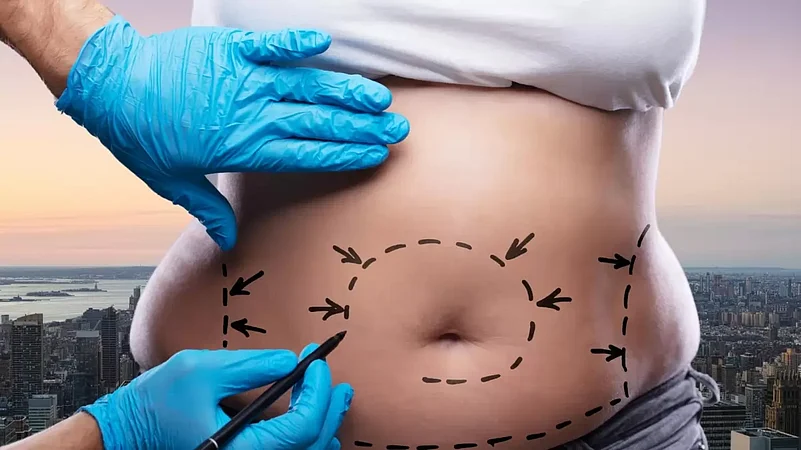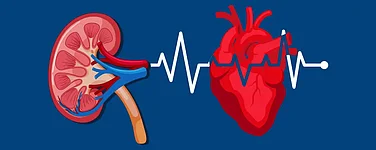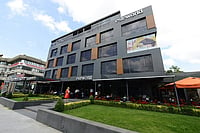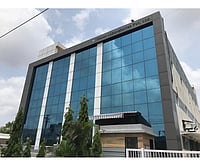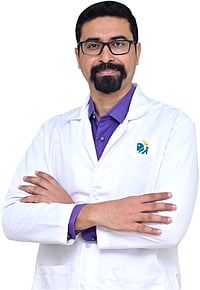NYC is the home of skilled plastic surgeons and state-of-the-art clinics that specialize in liposuction. This procedure, which removes excess fat from targeted areas of the body, can significantly enhance a person's silhouette and is often chosen by those who have not achieved their desired results through diet and exercise alone.
Choosing the right surgeon and facility is crucial as it affects not only the outcome but also the safety of the patient. Patients have a range of techniques available to them, from traditional tumescent liposuction to advanced procedures like Vaser and lipo360, each offering different benefits.
Top 3 Liposuction Surgeons in NYC
Choosing a Liposuction Surgeon in NYC
Selecting the right plastic surgeon is paramount for a successful liposuction procedure in NYC. The surgeon's experience, expertise, and location greatly influence the outcome.
Factors to Consider When Choosing a Surgeon
When looking for a plastic surgeon in Manhattan for liposuction, several factors should be considered to ensure safety and the best results:
Certifications: Ensure the surgeon is board-certified in plastic surgery.
Specialization: Look for surgeons specializing in liposuction, as they are more likely to be familiar with the latest techniques.
Patient Reviews: Read reviews and testimonials to gauge past patient satisfaction.
Before and After Photos: Assess the surgeon's work through their portfolio of previous patients.
The Importance of Surgeon Experience and Expertise
A surgeon's experience and expertise cannot be understated when it comes to getting liposuction in NYC. Highly reputed surgeons, such as the ones mentioned at the beginning of this article, have honed their skills over years, leading to more refined results.
Understanding Liposuction
Liposuction, as a technique for body contouring, should not be confused with general weight loss strategies. It specifically targets fat cells that are resistant to diet and exercise for a more contoured appearance.
What Is Liposuction?
Liposuction is a surgical procedure specifically designed to remove excess fat from certain parts of the body. It is not a weight loss method but rather a way to address areas where fat tends to accumulate despite a healthy lifestyle. It involves the use of a cannula and a vacuum to suction out the unwanted fat cells, leaving the treated areas with a more defined contour.
Benefits of Liposuction for Body Contouring
The primary benefit of liposuction is the improvement in the contour and proportion of the body. This procedure can be particularly beneficial for those areas that do not respond to diet and exercise. Patients often experience an enhanced self-image after having liposuction, as it can provide more aesthetically pleasing body lines.
Liposuction vs. Other Weight Loss Procedures
Liposuction differs from other weight loss procedures in that it is not a solution for obesity. While other procedures might focus on significant weight loss or altering the digestive system, liposuction specifically targets localized fat deposits. It is an option for those who are close to their ideal body weight but have trouble areas that they would like to refine.
Types of Liposuction Techniques
There are several advanced liposuction techniques available, each with its own method of targeting and removing fat. These methods offer different benefits for the patient, depending on the specific needs and goals of their body contouring.
Tumescent Liposuction
Tumescent liposuction is known for its effectiveness and safety. In this procedure, a large amount of medicated solution is injected into the targeted areas before the fat is suctioned out. The solution, which is typically a mixture of saline, lidocaine, and epinephrine, helps to numb the area, reduce blood loss, and facilitate easier fat removal.
Laser-Assisted Liposuction
Laser-assisted liposuction, or laser lipo, utilizes laser energy to liquefy fat cells before their removal. This technology can help to tighten the skin in the treated area, as the heat from the laser promotes collagen production. It can be particularly effective in treating smaller, more defined areas.
Ultrasound-Assisted Liposuction (VASER)
Ultrasound-assisted liposuction, also known as VASER lipo, employs ultrasound vibrations to break apart fat cells. This technique allows for a high level of precision, making it suitable for sculpting and contouring. Additionally, it tends to be less damaging to surrounding tissues, which may result in a smoother recovery.
Liposuction for Specific Areas
Liposuction is a versatile procedure that targets and removes excess fat from specific regions of the body, achieving a more contoured and refined appearance.
Abdominal Liposuction
The abdomen is a common area for liposuction, as it tends to accumulate stubborn fat that can be resistant to diet and exercise. Through abdominal liposuction, surgeons can sculpt and define the waistline, reducing the appearance of love handles and creating a flatter stomach. This may be especially beneficial for men dealing with gynecomastia or women post-pregnancy who wish to regain their pre-baby contours.
Liposuction for Thighs and Legs
Liposuction on the thighs and legs focuses on slimming the inner thighs, reducing unwanted bulk around the knees, and contouring the buttocks for a more balanced lower body appearance. When performing liposuction in the thigh area, care is taken to maintain the natural lines and shapes for seamless, aesthetically pleasing results.
Face and Neck Contouring
For the face and neck, liposuction can dramatically refine one's profile. The removal of submental fat beneath the chin can address concerns such as a "double chin," while liposuction on the neck can enhance the jawline and decrease the appearance of fullness. Facial liposuction can also complement other procedures like an arm lift to achieve a harmonious overall aesthetics.
Fat removal in these areas should be approached with precision and care to preserve natural contours and ensure patient safety.
Surgical Safety and Anesthesia
Choosing a liposuction provider in New York City involves understanding the nuances of surgical safety and the type of anesthesia used during the procedure. This encompasses the credentials of surgical facilities, the expertise of medical staff, and the various anesthesia options available.
Understanding Anesthesia for Liposuction
Anesthesia is a critical component of the liposuction process, ensuring that patients experience minimal discomfort during the operation. Local anesthesia is administered to numb the targeted area and is suitable for less extensive procedures; it allows patients to remain awake without feeling pain. For more substantial fat removal or comprehensive body contouring often referred to as liposculpture, general anesthesia may be necessary, rendering the patient unconscious to ensure comfort and allow the surgeon to work unimpeded.
- Local Anesthesia: Typically involves injections of lidocaine or similar
- General Anesthesia: Patient is fully asleep, administered by a certified anesthesiologist
- Sedation: Sometimes used alongside local anesthesia for relaxation and pain control
Patients should discuss anesthesia choices with their surgeons, considering the risks and benefits of each in the context of their specific surgical procedure and health profile. The expertise of anesthesiologists is paramount for patient safety, whether undergoing liposuction with local anesthesia or general.
Surgical Safety and Accreditation
Surgical safety in liposuction is multifaceted, involving strict adherence to protocols, quality control measures, and facility accreditation. Reputable clinics will often hold accreditation from organizations such as the American Association for Accreditation of Ambulatory Surgery Facilities (AAAASF). This indicates a dedication to maintaining a safe environment adhering to national standards for equipment, staff qualifications, and emergency readiness.
- AAAASF Accreditation: A marker of excellence in patient care and surgical safety
- Facility Protocols: Routines for sterilization, proper equipment, and emergency procedures
- Surgeon Credentials: Verification of the surgeon's certifications and experience
Patients should verify the accreditation status of the facility and the credentials of the healthcare team to mitigate surgical risks and optimize safety outcomes. It is also essential that the surgical team follows rigorous protocols before, during, and after liposuction to maintain the highest level of patient care.
Liposuction Consultation and Treatment Plan
When considering liposuction in New York City, the journey typically starts with a thorough initial consultation and the development of a personalized treatment plan. These steps ensure that the patient's expectations align with what can be realistically achieved while prioritizing their comfort and safety.
Initial Consultation
During the initial consultation, the surgeon will assess whether the individual is a suitable candidate for liposuction. This involves evaluating the skin quality and the targeted areas for fat removal. They will discuss medical history, address concerns, and set realistic goals for the procedure. Ensuring a patient is comfortable and informed is paramount at this stage.
Developing a Personalized Treatment Plan
A treatment plan is tailored to the individual's unique body structure and the goals they wish to achieve through liposuction. The surgeon will outline the specific approach, discuss any potential risks, and explain pre-operative preparations as well as the recovery process. They will also establish a schedule that fits the patient's lifestyle and any prior commitments.
Recovery and Results
Recovering from liposuction in New York City entails a period of rest and adherence to post-operative care to ensure optimal results. Achieving long-term outcomes is contingent upon maintaining a stable weight through diet and exercise, as the removed fat cells do not regrow.
Post-Operative Care
After liposuction, patients will experience a period of recovery, which typically includes swelling, bruising, and discomfort that can be managed with medications prescribed by the surgeon. The use of compression garments is often recommended to help reduce swelling and support the affected areas. It is important for patients to follow their surgeon's specific instructions, which may include limiting movement and avoiding strenuous activities. The initial recovery period usually lasts between 4 to 7 days, during which patients may return to work and light activities.
Achieving Long-Term Results
While liposuction eliminates fat cells from the body, maintaining results depends on a healthy lifestyle. Patients are encouraged to adhere to a balanced diet and regular exercise regimen to prevent new fat from accumulating in other areas. The skin's elasticity plays a crucial role in how it conforms to the new contours after fat removal. To effectively tighten skin post-procedure, one should keep their body well-hydrated and nourished. Long-term weight loss is not guaranteed with liposuction alone; it is not a substitute for weight loss but rather a method for removing localized fat deposits that are resistant to diet and exercise.
Patient Experience and Testimonials
When selecting a liposuction provider in New York City, prospective patients often rely on testimonials to gauge the quality of the experience. Reviews from previous patients can offer insights into the procedure's efficacy, the comfort provided during the process, and the overall satisfaction with the results for both women and men.
Patient Feedback Highlights:
- High Satisfaction: Patients often express high satisfaction with their body transformations, stating that the procedure enhanced their self-esteem.
- Comfort During Treatment: Reviews repeatedly mention a comfortable experience, indicating that pain management and patient care are taken seriously.
- Knowledgeable Staff: Patient stories frequently commend the knowledgeable staff, who provide clear explanations and attentive post-operative care.
Frequently Asked Questions
The following FAQs are designed to provide clear, concise information regarding liposuction procedures in Manhattan. They focus on cost, technique differences, safety, recovery expectations, and the choice between liposuction and tummy tucks.
What is the range of costs for liposuction procedures in Manhattan?
Liposuction costs in Manhattan can vary widely, generally influenced by the extent of the procedure and the surgeon's expertise. More treatment areas often require bigger budgets. Patients should consider the procedural complexity when evaluating the financial implications.
What are the differences between traditional liposuction and Smart Lipo?
Traditional liposuction involves removing fat using a cannula and manual manipulation, while Smart Lipo utilizes a laser to liquefy fat before removal, which can also contribute to skin tightening.
How much fat can safely be removed during a liposuction procedure?
The safe limit for fat removal during liposuction often hinges on multiple factors such as patient health, and generally should not exceed 5 liters or approximately 11 pounds of fat.
What should patients expect in terms of recovery time after a liposuction operation?
Recovery time post-liposuction can vary, with most patients returning to normal activities within a few days to weeks. The full resolution of swelling and final results may take up to a few months.
How do tummy tucks differ from liposuction, and which might be more suitable for me?
A tummy tuck primarily addresses excess skin and may include repair of abdominal muscles, while liposuction focuses on fat removal. Suitability depends on individual goals related to skin laxity and fat reduction.
Disclaimer: This is a sponsored article. All possible measures have been taken to ensure accuracy, reliability, timeliness and authenticity of the information; however Outlookindia.com does not take any liability for the same. Using of any information provided in the article is solely at the viewers’ discretion.






